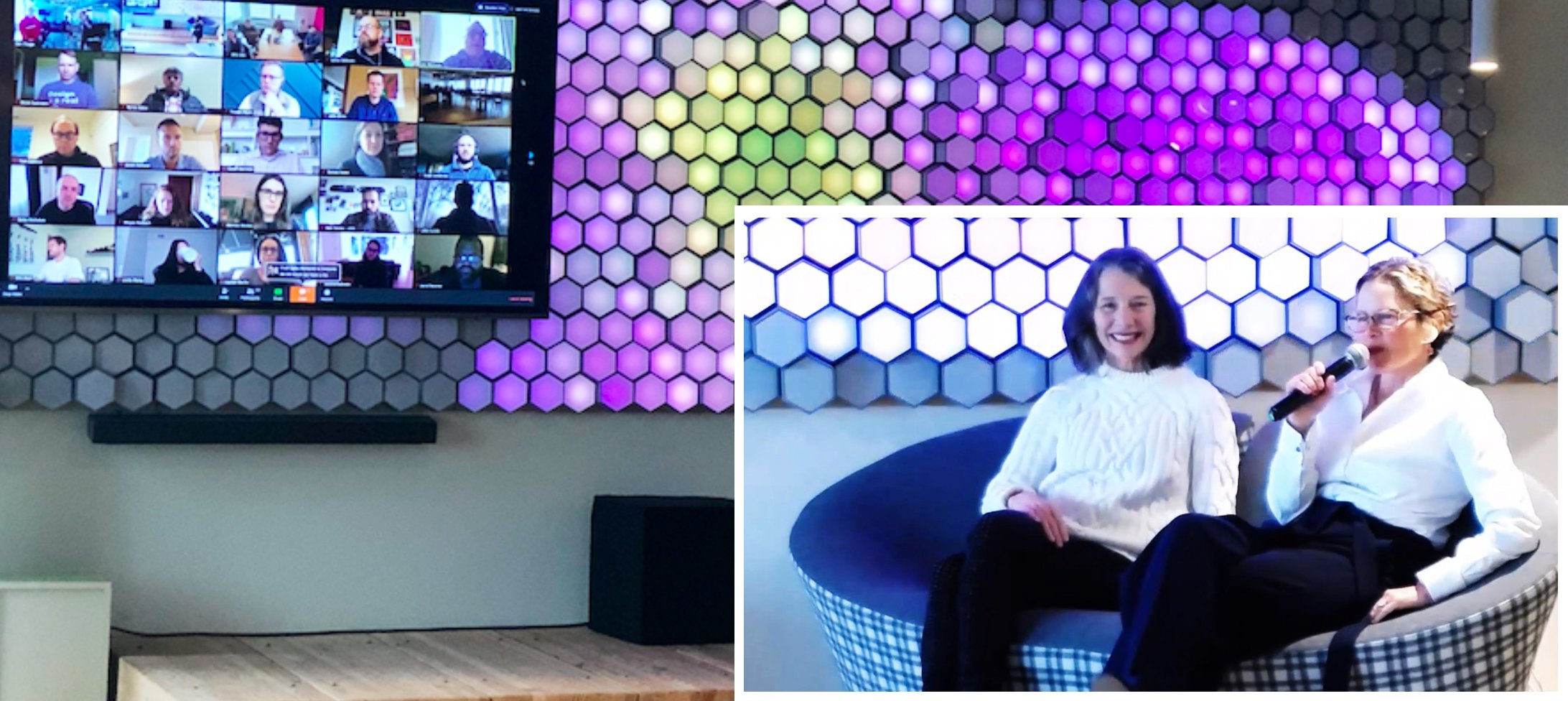
Hi everyone (Blink employees),
Below is a message from Linda and me, and we’re also speaking on behalf of the Blink leadership team.
At Blink, it has always been a core foundation of our culture that we want everyone we work with to have good health, life balance, and enjoyment in their work. When we enter uncertain times that require substantial adjustments, we want to be sure that we take these core values with us. We have some new challenges in our 100% working-from-home context that may require us to give extra thought and attention to how we maintain our well-being.
We also need to recognize that one size does not fit all. We’re a collection of diverse people, and we’re likely to experience different challenges, depending on our needs. For some people, it will be the social isolation. For others, it will be too much stimulation, as they try to work with kids at home. Some people will find staring at a screen all day is hard. For others, it may the constant bad news about things we can’t change. Top line: We want to offer support to everyone in the ways that they need it most.
Here are a few of the basic considerations that we want to emphasize:
1. Family first
The balance of home life and work life is uniquely challenging with parents and kids sharing space 24/7. Whether we’re trying to work while keeping a 3-year-old busy, helping adolescents accept the fact they can’t be with their friends, or trying to figure out how to care for the older members of our clans, we’re facing unique challenges.
We have to relax our expectations about how much we can accomplish in these circumstances. Think about how to prioritize what is essential versus merely important. Have an open discussion with your team members to best understand the challenges each person is facing and to collaboratively identify what is most critical in your projects.
2. Your needs
Pay attention to your needs, and make sure you’re creating some separation between work and home. For example, create boundaries between work and home tasks — even though they’re happening in the same space. Set an appropriate time to end your workday and turn off all notifications. Be fully present at work, and then be fully present with your family or friends, keeping these aspects of your life separate as much as possible. Try to keep work stimuli away from your bedroom so you aren’t “triggered” by work thoughts when you need to sleep, and also try a change of scenery throughout your workday — just like if you were walking to different meetings. Make sure you have a good period of time after you end your work and before you go to bed.
During your workday, make sure to take the breaks you need to keep yourself refreshed. Try to eat your meals away from your computer. Get up and stretch or take a walk. We want you to keep your brain active! Try taking a call or having a meeting while walking outside. Take advantage of not commuting by getting extra sleep and exercise every day, and try to use the “50-minute hour,” developed by therapists to get a needed break between meetings.
For some people, it may be tempting to work all the time as a way to fight off boredom. Please remember to develop some good practices of movement, switching your brain to other creative tasks and making time to connect with others. You need time to rest and recharge in order to have fresh ideas and thinking for each new day.
3. Stay connected
For many people, the absence of social connection will be very difficult. We may feel stirrings of “cabin fever.” The isolation can put a strain on our most important relationships. Please find the ways that work best for you to stay connected. Many of our Blinkers have come up with some ingenious solutions on Slack, but this might also be a good time to have more frequent one-on-one conversations with colleagues, managers, and others. Schedule virtual coffee dates, happy hours, and even dinners together! Check in with your team members about how everyone is doing — not just about project deadlines. And don’t feel that you need to have it together all the time. At Blink, we have often said that we consider asking for help to be a strength.
Here are some of the things we’ve seen Blinkers do to help:
- Remote Water Cooler: Based on a suggestion from Quba, Mark created an anytime Zoom meeting. Hop on anytime for the random face-to-face interaction. You never know who might show up.
- The newly created #distributed-work Slack channel has been an active place to share insights, pics, tips, and more.
- The #little-blinkers Slack channel is a great place to see and post about kiddos at home.
- The #hr channel has some recent posts about available market volatility counseling and Cigna plan updates pertaining to Covid-19.
- In #random, you can compete for best meal of the day.
- Remember the 3@3 daily exercise challenge.
- And join the happy hours!
4. Stay positive
Please also remember the importance of the 5:1 positivity ratio. Figure out ways to reduce the negative exposure and increase the positive. It can be tempting to focus all of our thinking on the pandemic and forget to take a walk in the sunshine. We have many reasons to be grateful. We’re able to work remotely, so the company can keep operating. We get to do meaningful work, solving complex problems for worthy client partners. We get to make life simpler, easier, and more beautiful for many people. And, of course, we have each other.
Take care and keep sharing your great ideas with our amazing community.

Karen Clark Cole
CEO, Blink
